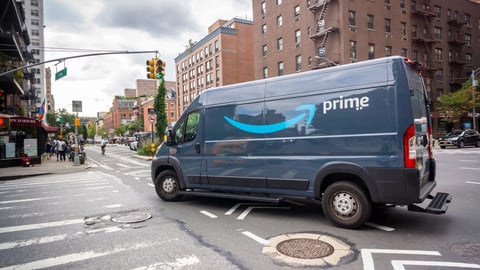Report: Consumers rapidly shifting to e-commerce
1WorldSync, a retail-focused technology company, has released its 2024 Consumer Product Content Benchmark Report. The report features insights collected from 1,750 shoppers across the U.S. and Canada, and it aims to illuminate how product information influences consumer behavior on the path to purchase.
The report found that consumers rely on product content in three stages of the shopping journey, regardless of shopping channel. Discover, where shoppers find products that match their needs; Align, where they assess product features, details and specifications; and Validate, where they confirm their choices through user-generated content like ratings, reviews and customer-submitted videos and imagery.
- Discover: Forty-one percent of shoppers report they increased their use of retail e-commerce sites and marketplaces compared to 2023, while only 9 percent reduced their activity in these channels. Conversely, only 15 percent say they're browsing brands' direct-to-consumer sites more than in 2023 compared to 21 percent who are using this channel less.
- Align: Content found on e-commerce product detail pages (PDPs) is increasingly used by shoppers in brick-and-mortar stores. The number of shoppers who always use smartphones for product research while in-store doubled from 2023, with 11 percent using their smartphones during every shopping trip. On average, consumers use their devices on more than half of shopping trips (54 percent). This is up five points from both 2022 and 2023.
- Validate: Nearly 7 in 10 shoppers (65%) often or always read ratings and reviews, with customer-submitted images, videos and FAQ sections outlined as the most important factors for consumers. Nearly half (49 percent) of shoppers say they leave PDPs that have too few customer ratings and reviews.
"Brands and retailers face a pivotal juncture with their commercial strategies: They can unify their product content experience across the omnichannel or they can continue to execute in silos that take for granted how shoppers behave in a hybrid retail environment," said Steve Sivitter, CEO of 1WorldSync. "Our study is clear that no matter where consumers shop, they demand rich, accurate and consistent product information. Brands and retailers that excel in orchestrating this content across all channels will be the true champions of commerce."
The report paints a picture of a retail landscape where digital and physical shopping experiences are increasingly intertwined. With 73 percent of consumers purchasing items online that they previously only bought in-store, the line between e-commerce and traditional retail continues to blur.
More key findings from the report include:
Technology reshapes in-store and online shopping experiences.
Both established and emerging technologies are crucial in shaping consumer behavior. In-store, 64 percent of consumers have scanned QR codes to compare prices, check reviews, view detailed product information and access digital coupons – up from 46 percent just last year.
Online, AI tools are increasingly influencing purchase decisions. Thirty-one percent of shoppers now use AI-powered assistants like ChatGPT and Google Gemini to inform their choices, up from 22 percent in 2023. While use of AI tools is increasing in frequency, consumer trust in these tools is still lacking. Just 35 percent of consumers who use AI tools find them to be accurate often or always. These trends emphasize the importance of optimizing product content for both physical and digital interactions.
E-commerce dominates holiday shopping plans.
The report indicates a significant move towards online channels for holiday shopping, with 42 percent of consumers planning to complete more of their holiday shopping online this year compared to last. Notably, 10 percent of shoppers intend to do 100 percent of their holiday shopping online, double the 5 percent from the previous year. This trend is supported by increased use of retailer mobile apps (28 percent) and greater adoption of buy-online-pick-up-in-store services (24 percent).
Content drives product discovery and purchasing decisions.
Nearly 8 in 10 shoppers state that they often choose not to buy products due to poor quality or lack of product content. Conversely, more than half (51 percent) of shoppers admit that compelling rich content on an e-commerce page has swayed them into making unplanned purchases.
User-generated content is crucial for purchase validation.
A strong majority of online shoppers leave product reviews, with only 18 percent citing that they never do. These contributions are crucial for the shopping experience, as 65 percent of shoppers often or always read reviews and 67 percent say that ratings and reviews, as well as customer-submitted content like videos and product photos, have persuaded them to purchase a product they didn't think they needed or wanted. The most valued features of product reviews include accurate descriptions of size and color, balanced feedback and the inclusion of product images.
Additional consumer insights from the report include:
- Economic pressures drive shopping behavior. The percentage of shoppers who search four+ sites before making a significant purchase increased by six percentage points this year (from 20 percent to 26 percent). Additionally, 25 percent of shoppers increased their use of budget or fast-fashion e-commerce sites like Temu or Shein compared to 2023; overall, 65 percent have shopped on such sites—up 11 points from last year's report.
- Influence of social commerce. Nearly half (49 percent) of consumers made a purchase based on an influencer's recommendation in the past year, up from 40 percent last year. Notably, consumers aged 25-34 ranked influencer recommendations as the most important factor aside from price.
- Rise of private labels. Approximately 89 percent of consumers have purchased a private-label product in the last 12 months, with packaged groceries (19 percent) and fresh groceries (15 percent) leading the categories.
- TikTok Shop gains traction. Twenty-six percent of consumers have made a purchase through TikTok Shop, primarily driven by influencer recommendations (27 percent) or attractive discounts (26 percent).
To download the full 2024 Consumer Product Content Benchmark Report, click here.



